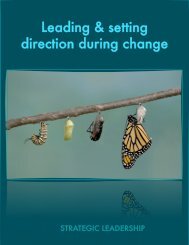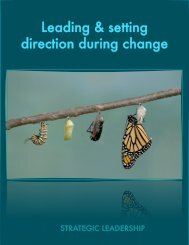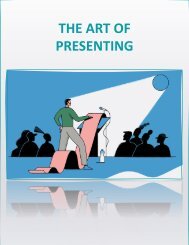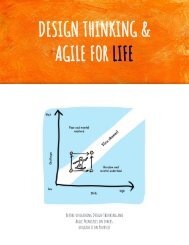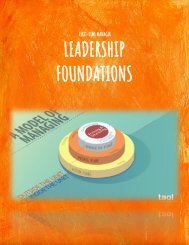2020 iLEAD e-book
- No tags were found...
Create successful ePaper yourself
Turn your PDF publications into a flip-book with our unique Google optimized e-Paper software.
Summary<br />
When it comes to problem solving, there is a plethora of models and techniques to choose from, most of them<br />
being variations of the same general theme: define the problem, consider potential solutions, select, test and<br />
implement an appropriate mode of action. So, applying a model that works for you should solve your problem -solving<br />
problems. Right? Wrong<br />
Despite your best efforts, problems do persist and you keep rushing from one crisis to another, never really<br />
fixing problems, just stopping them from getting worse. Here is a piece of advice. Next time, before you dive<br />
into problem solving, take a few seconds to ask yourself some simple questions:<br />
Is this my problem to solve?<br />
But, aren’t my team members sufficiently competent, confident and empowered to solve the problem on their<br />
own? Or is it too complex and needs to be brought to the attention of a higher authority?<br />
Am I solving the right problem?<br />
Albert Einstein once said: “If I were given one hour to save the planet, I would spend 59 minutes defining the<br />
problem and one minute resolving it”. Those were wise words, but most of us aren’t sufficiently rigorous in<br />
defining the problems we are attempting to solve<br />
Am I providing a patch or a solution?<br />
Under the relentless pressure of time we often resort to patching; we make a gut feeling diagnosis and introduce<br />
a hasty change in the process. This quick -‐ fix will, almost invariably, create a problem somewhere else in the<br />
system, fuelling further the vicious circle.<br />
Am I being trapped by my own mind? by my emotions?<br />
When in problem solving mode, do I have a bias towards alternatives that perpetuate the status quo? Do I tend<br />
to subconsciously decide what to do before figuring out why I want to do it? It isn’t a good idea to make decisions<br />
when we are angry -‐ we all know that. But do I always follow this simple piece of advice?<br />
In today's highly dynamic business environments dealing with the “unexpected” is the norm. The "unexpected"<br />
takes the form of problems whose solutions can simply open the door to innovation and improvement.







